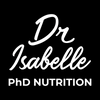5 REASONS TO INTRODUCE PLANT PROTEIN

5 REASONS TO INTRODUCE PLANT PROTEINS
1. For health
Plant-based proteins, such as nuts, legumes and tofu, contain less saturated fat than animal-based proteins, which may benefit cardiovascular health. In addition, excessive consumption of meat can be harmful to health. The World Health Organization (WHO) has classified red meat as a possible carcinogen and processed meat as a carcinogen.
2. For the fibers
Vegetable proteins contain more fiber than animal proteins. Fiber contributes to satiation and can help regulate intestinal transit, lower cholesterol and better control blood sugar. Introducing plant-based protein into your diet is a good way to increase your fiber intake.
3. For the wallet
Plant proteins are generally less expensive than animal proteins. By cooking more often with these, you can make significant savings.
4. For the environment
They are also more sustainable than animal proteins, as their production requires fewer resources and generates fewer greenhouse gases. By consuming them more often, you reduce your carbon footprint.
5. To provide variety
The more varied a diet is, the lower the risk of nutritional deficiencies. This is true for all foods, including protein sources. By introducing vegetable proteins, you increase the variety of your diet and thus benefit from a wider range of nutrients and all their benefits.
Amount to take per meal to have enough protein
Food |
Portion |
Protein (g) |
Firm or extra-firm tofu |
140ml or 150g |
12 |
Prepared edamame |
175ml or 115g |
12 |
Boiled chickpeas |
175ml or 120g |
11 |
PVT |
|
20 |
Boiled lentils |
175ml or 145g |
13 |
Food |
Portion to get 15-20g of protein |
Firm or extra-firm tofu |
175 - 230ml |
Prepared edamame |
220 - 290ml |
Boiled chickpeas |
240 - 320ml |
PVT |
For 20g:
|
Boiled lentils |
200 - 270ml |
5 favorite proteins
1. PVT
The textured vegetable protein is a protein food made from cooked soy flour. Once rehydrated, it is similar to ground meat and can be used in a wide variety of recipes.
2. Edamame
Edamame are immature soybeans. They look like peas, but are higher in protein.
3. Tofu
Tofu is a vegetable protein made from soy. It is a quick source of protein to prepare since it can be eaten raw. In addition, thanks to its rather neutral flavor, tofu can be used in several recipes by varying the ways of flavoring it.
4. Tempeh
Tempeh is a vegetable protein originating from Indonesia. Like tofu, tempeh is made from soybeans, but these beans are fermented and contain more protein.
5. Legumes
The legume family includes several varieties of peas, broad beans, beans and lentils. They are economical, nutritious and very versatile: soups, dips, stews, salads, burger patties, etc. Legumes can be cooked in a thousand and one ways.
Bonjour, pour tout ce qui est à base de soya…non recommandé pour moi par ma chirurgienne à cause de deux cancers du sein…par contre, j’adore les légumineuses! J’avoue que je triche un ti peu pour les adamanes…dans mes pokés bols, trop bon! Si vous avez d’autres idées…pour quoi pas! Que pensez-vous de la protéine en poudre pour compléter mon alimentation…malgré que je mange quand même assez sainement, merci!🙏
Merci pour toutes ces informations. J’oriente maintenant mon alimentation vers des protéines végétales pour diminuer mon taux de cholestérol. Je suis un peu perdue à savoir combien de grammes de protéines il est suggéré de consommer par jour.
@Sylvie : Bonjour Sylvie,
1. Pour obtenir 15 à 20 g de protéines pour le tofu, on parle de 175 à 230 ml, soit environ 188 à 245 g.
2. Pour le tempeh, une portion de 100 g donne environ 20 g de protéines.
3. Pour les légumineuses, elles ne fournissent pas toutes les mêmes valeurs nutritives. Il faut donc bien vérifier le tableau de valeurs nutritives à l’arrière de vos aliments.
Bonjour,
Merci pour l’article
J’aurais toutefois, trois questions suite à la lecture de votre article sur la quantité de protéine végétale à consommer afin d’obtenir 15 à 20 mg
1) Pour le tofu, vous indiqué la quantité en ml alors que le cube de tofu est en mg. Quelle est la quantité en mg que l’on doit consommer
pour obtenir 15 à 20 mg de protéine2) Quant au tempeh, quel est la quantité en mg que l’on doit consommer pour obtenir 15 à 20 mg de protéine
3) Est ce que pour les légumineuses (haricot blanc, rouge, pois chiche) c’est la même quantité que l’on doit consommer pour obtenir 15 à 20 mg de protéine
@Marguerite : Bonjour Marguerite, merci pour votre précieux commentaire! Nous comprenons tout à fait votre recommandation et prenons le tout en note! :)











8 comments